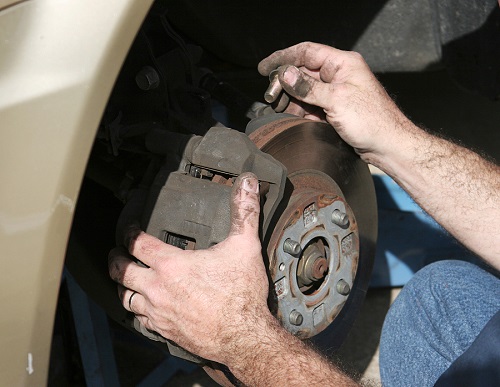Dr Brakes Complete Auto Repair: Auto Repair Coconut Creek, FL - FL
Diagnostics for brake pedals
Your car's braking system depends heavily on the brake pedal, and its proper operation is crucial for your safety while driving. It's crucial to identify and fix problems with your brake pedal as soon as possible. We will discuss brake pedal diagnostics, typical issues, and how to fix them in this article.
1. 1. Pedal with a sponge
Imperial Point, FL Auto Repair - Dr Brakes Complete Auto Repair Total Car Care
Many drivers frequently experience problems with their brake pedals being spongy. The brake pedal feels soft and lacks the firmness you would anticipate when you press it. This issue may be brought on by:
- Air in the Brake Lines: Hydraulic pressure can be decreased when air becomes trapped in brake lines. This problem can be fixed by bleeding the brake system.
- Brake Fluid Leak: A spongy pedal can be caused by a leak in the brake lines or an incorrect brake caliper. Look for any obvious leaks and fix them as necessary.
2. Low pedal for brakes
When you press your brake pedal, it may sit unusually low or closer to the ground, which may be a problem. Potential causes include the following:
BMW Brakes Service & Repair in Coral Ridge Isles, FL
- Worn brake pads: A lower pedal and a reduced braking effectiveness can result from wearing them. Check your brake pads and, if they are worn, replace them.
- Brake Fluid Leak: As was already mentioned, a leak in the brake fluid can lead to many problems with the pedal, including low pedals. Check for leaks in the brake lines and calipers.
3. 3. Pedal Brake Hard
A spongy or low brake pedal can cause just as much trouble as a hard one. Breathing may become more challenging and ineffective as a result. The following are possible causes for a hard brake pedal:
- Vacuum Leak: A lot of cars use vacuum-assisted brake boosters. A vacuum leak could result in a hard pedal. Check the connections and vacuum hoses for any leaks.
- Faulty Brake Booster: A hard pedal may result from a broken brake booster itself. In these circumstances, it might be necessary to replace the brake booster.
4. ........................................... Vibrations of the brake pedal
North Andrews Gardens, FL Auto Repair Shops & Maintenance
When you braking, you may experience vibrations or pulsations through the brake pedal, which could be a sign of several problems, including:

- Warped Brake Rotors: Vibrations during braking can be brought on by warped or unevenly worn brake rotors. As necessary, resurface or swap out the rotors.
- Wheel Alignment Problems: Uneven tire wear and vibrations from the brake pedals can result from improper wheel alignment. If necessary, have your alignment checked and fixed.
5.. 5. Pedal Brake Noise

Pressing the brake pedal can make strange noises that can be unsettling. The following are a few potential sources of pedal noise:
Dr Brakes Complete Auto Repair's Service Center
- Brake Pad Wear Indicators: Wear indicators are frequently included with contemporary brake pads. These indicators may squeak or scrape when the pads become worn down. If you hear this sound, replace the brake pads.
- Loose brake components: When you apply the brakes, rattling or clunking noises can be heard coming from loose calipers, bracketing, and other brake parts. Check any loose components and tighten them.
6.. 6. Brake Response Delayed
It's important to look into if you notice a delay between pressing the brake pedal and the actual braking response of your car. The following can cause a delayed brake response:
- Brake fluid contamination: Contaminated brake fluid can impair its capacity to effectively transmit hydraulic pressure. The brake fluid can be flushed and replaced to help solve this problem.
- Brake Caliper Problems: Seated or sticky brake calipers can cause a slow response. If necessary, check the calipers and replace them.
In conclusion, the brake pedal is an important part of your car's braking system, so any problems with it need to be fixed right away to keep you safe on the road. Your brake pedal can be kept in good shape with regular maintenance, inspection, and prompt repairs, enabling dependable and responsive braking.
find more information